- magyar
- english
- Русский
The 2024 IEEE 3rd Conference on Information Technology and Data Science
Plenary and Keynote Speakers

Viktor Dörfler
University of Strathclyde Business School, Glasgow, UK
"AI Ethics: What Is the Real Question?"
Ethics is one of our oldest disciplines, one of the main branches of philosophy, it is well over two millennia old. AI is also an intellectual quest, one of the newest ones, although not nearly as new as some think? It started in the mid-1950s. What happens when we bring the two together? I give a brief historical overview of the development of thinking in ethics, putting on the map the traditional schools of ethics, some less known further attempts, as well as moral psychology, which I believe to be a paramount importance. Then I ask how can any of this be done with AI, and review the various approaches that may be relevant, such as computer ethics, digital ethics, and robot ethics. The problem becomes very wide at this point, as we have to realize that it is not only about AI being ethical but also developing AI in an ethical way, using AI in an ethical way, behaving ethically towards AI, and so forth. I also consider the historical context, which is unique in the course of ethics, to a large extent thanks to technological developments. Until now, over the whole course of history, if mankind faced a big ethical challenge, we could take decades to figure out how to deal with this. Just think about the atomic bomb. Today, if we mess up something around AI, we may have only hours at our disposal. Then I reflect on what AI can and cannot do compared to the human mind, arguing that the human mind is better at some things, such as intuiting, storytelling, engaging in social relations, and AI is better at some other things, such as processing enormous amounts of data and identifying potential patterns. However, judging the significance of a potential pattern remains a uniquely human capability, at least for now. On this basis I suggest that we are asking the wrong questions about AI Ethics, and explore some new directions that I find more promising. What emerges from this discussion is an understanding that we are in a serious trouble in ethics, be it in relation to AI or just between us humans. It seems that despite of the numerous models on ethics, humankind did not manage to agree about much in terms of moral judgements. Over the past two and a half millennia, we learned to ask increasingly difficult questions, but answers are scarce and perhaps there is none that everyone accepts. This is a problem, as with AI in our everyday life, we need to answer fundamental ethics questions right now. Delay is not an option.

Alex Doboli
Stony Brook University, Stony Brok, NY
"Novel Challenges and Opportunities for Improving the Collaborative Efficiency of Teams Using Speech Data-based Machine Learning Models for Understanding Human Behavior "
Internet-of-Things Edge (IoT-E) is a novel architecture expected to offer important and unique opportunities in applications, like automotive, smart traffic, smart homes, healthcare, power supply management, environmental protection, and many more. This architecture supports distributed and decentralized computing, in which data sensed through a myriad of sensors is used to make decisions and produce actuation responses. The tackled performance requirements include real-time constraints, robustness, low power/low energy consumption, and more recently decarbonization for sustainability. Moreover, a special class of applications, called “Humans-in-the-Loop”, must consider the specifics of human behavior over time as part of the goals to be optimized, where humans are either acting individually, as teams, or even as communities. To this end, Machine Learning is increasingly combined with traditional, algorithmic methods to improve the smartness and flexibility of the implementations.
The ”Humans-in-the-Loop” feature of applications require new approaches to manage in a comprehensive, non-invasive yet private way the integration of human behavior with the resources of the (IoT-E) architecture. This presentation focuses on applications centered around teams that collaboratively solve problems, and for which behavior can be traced using the verbal discussions between team members. In addition to tracking speakers over time using diarization algorithms, the talk also discusses novel opportunities of utilizing theoretical models on team behavior from social sciences to support the computational modeling of this behavior. For example, models must incorporate information about subjective aspects, like emotions, intentions, and beliefs. However, the understanding of such aspects often requires the interpretation of the semantics of verbal discussions, which is still a challenging task. The requirements specific to human behavior create opportunities to devise new ML algorithms. The application of the methods presented in this talk has been to understand and improve team problem solving during algorithm design but other new applications in healthcare and education are envisioned too.

Sándor Jenei
Eszterházy Károly Catholic University, Eger, Hungary
Institute of Mathematics and Informatics University of Pécs, Pécs, Hungary
"A Case Study from Algebra through Logic to Computer Science"
In this presentation, we will discuss the relationship between the interpolation (logical) property and (algorithmic) decidability, the connection between interpolation and (algebraic) amalgamation, and demonstrate the presence or absence of the amalgamation property in some algebraic structures that are significant in the field of substructural logics.

Zijian Győző Yang
HUN-REN Hungarian Research Centre for Linguistics Budapest, Hungary
"The First Instruct-Following Large Language Models for Hungarian"
In recent months, large language models have gained significant attention, with companies striving to develop models capable of solving various natural language processing tasks through extensive data training. The release of ChatGPT by OpenAI demonstrated unprecedented capabilities via a multi-step fine-tuning process. For Hungarian, pre-trained large language models include PULI GPT-3SX, PULI GPTrio and in the recent months SambaLingo. In our research, we pre-trained a new large language model based on Llama-2 and inspired by ChatGPT, focuses on fine-tuning with instruction-based prompts. We created a Hungarian prompt dataset and fine-tuned the PULI large language models into instruction-following models. In our research, we discovered that transfer learning allows the model to gain insights from other languages. We found that further pre-training of the language model could leverage valuable knowledge from the originally pre-trained model. Additionally, we can adapt a LLaMA model to another language, such as Hungarian. Our PULI LlumiX models in three Hungarian benchmark could achieve significant better performance. Our instruction model in both HuSST and HuRTE zero-shot competitions could achieve more than 10 accuracy scores. Our further pre-trained Llama-2 model, the PULI LlumiX 32K and the fine-tuned PULI LlumiX 32K Instruct, became state-of-the-art models capable of solving various language technology problems.


